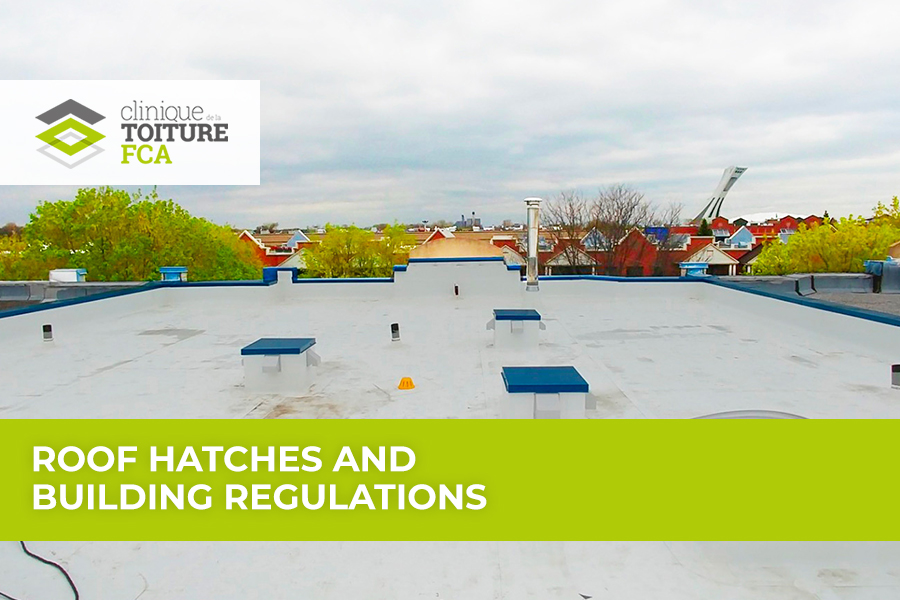
Home > Blog posts > A Complete Guide on Roof Hatch Installation
A Complete Guide on Roof Hatch Installation
A roof hatch represents the safest way to access the roof of a commercial or residential building. This access hatch enables entry from the inside, thereby simplifying maintenance, repairs, or other interventions —proving especially beneficial when such access is frequently required.
What is a Roof Hatch and What is it Used for?
Definition of a Roof Hatch
A roof hatch, or roof access hatch, is a device that allows entry to the roof from within the building. This opening is designed to provide the safest access to that area of the structure for repairs, inspections, or other interventions.
Types of Roof Hatches: Steel, Aluminum, Fire-Resistant, Etc.
Various types of access hatches are available to suit different needs. For example, steel hatches are robust, solid, and durable, while aluminum options offer the advantage of being lightweight and easy to handle—ideal for larger hatches while also being resistant to corrosion. As for fire-resistant hatches, they provide additional protection in the event of a fire.
Where is a Roof Hatch Installed? Residential vs. Commercial
Generally, roof access via hatches is found on flat roofs or roofs with an incline that does not exceed 30 degrees. They are installed to facilitate maintenance, repair, and installation work. In residences, they are typically located in the attic or mechanical room; in commercial buildings, they often provide access to maintenance equipment such as heating, ventilation, air-conditioning, etc.
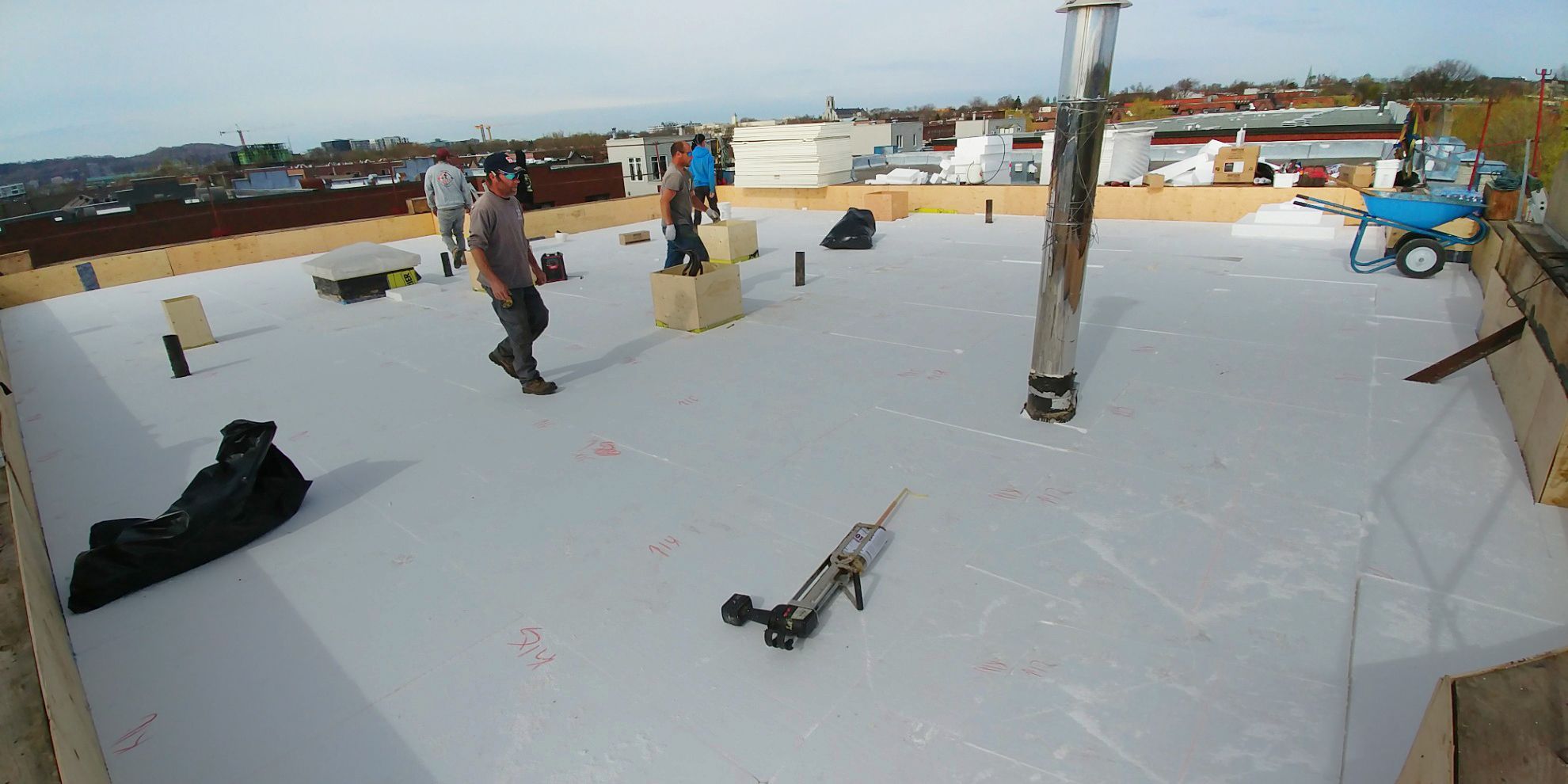
Why Install a Roof Access Hatch?
Easy Access for Roof Maintenance and Inspections
A roof hatch allows access to the roof from the inside, thereby minimizing dangers such as the risk of a fall. This means that any work performed on the roof—including maintenance, inspections, installations, and other interventions—becomes simplified.
Safety and Building Code Compliance
Although access hatches help reduce risks, they can still be prone to falls even from low heights. Consequently, they must meet and adhere to certain standards. For example, a protective barrier surrounding the hatch is mandatory. A support and safety rail should also be installed in line with the stairs or ladder leading to the roof. Additionally, you must be able to keep the hatch open securely, and an effective locking mechanism must be in place to prevent accidental opening. Feel free to contact La Clinique de la Toiture FCA to learn more about the prevailing standards.
Better Management of Roof Interventions (De- Icing, Ventilation, etc.)
Access via a roof hatch remains the safest way to carry out routine tasks, such as snow removal, de-icing, and any intervention related to maintenance equipment.
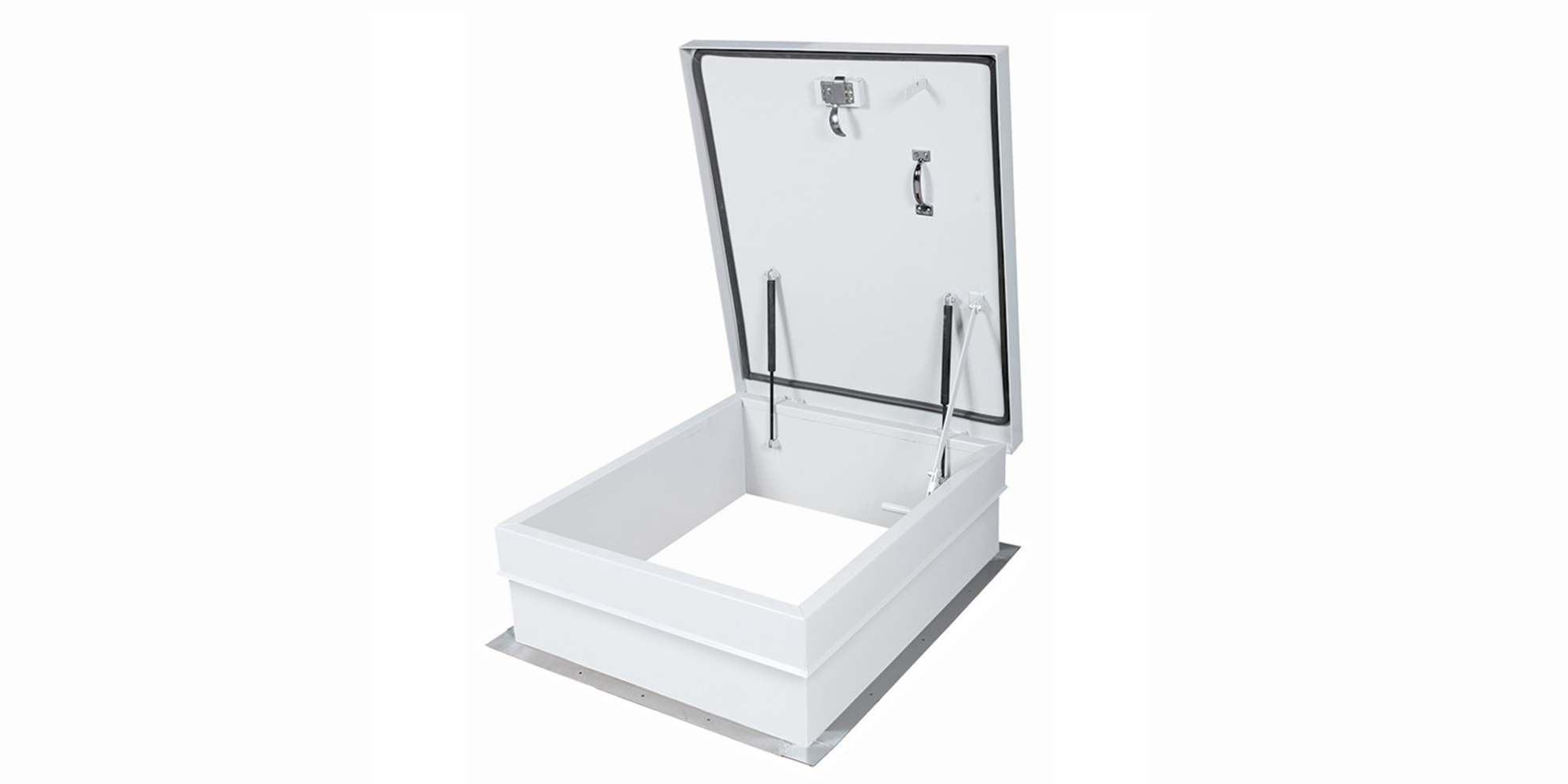
Clinique de la Toiture FCA: Installation and Replacement of Roof Hatches in Montreal
Given the importance of a flawless installation, it is recommended to rely on a professional team with many years of experience in installing roof hatches. After all, a well-maintained and easily accessible roof is among the renovations that increase your home’s value when the work is done properly and meets all standards.
Our Complete Services: Inspection, Installation, and Maintenance
La Clinique de la Toiture FCA has been specializing in roof installation and restoration, roof hatches, and related products for 29 years. Our specialized team ensures an installation that adheres to industry standards while also offering roof inspection and maintenance services.
How to Choose the Right Roof Hatch?
A team of experts, like the ones at La Clinique de la Toiture FCA, has the necessary experience to help determine the ideal hatch for your project.
Selection Criteria: Usage, Safety, Materials, Insulation
The ideal hatch will depend on its intended usage and the safety standards required. The materials used will be chosen based on usage and the hatch size. In all cases, proper insulation remains an essential criterion to prevent water and air infiltration, as well as excessive formation of condensation and frost.
Roof Hatch with Integrated Ladder or Step Stool: Available Options
For frequent access via the roof hatch, and when interior space permits, it is recommended to opt for a hatch with an integrated ladder or step stool to facilitate interventions.
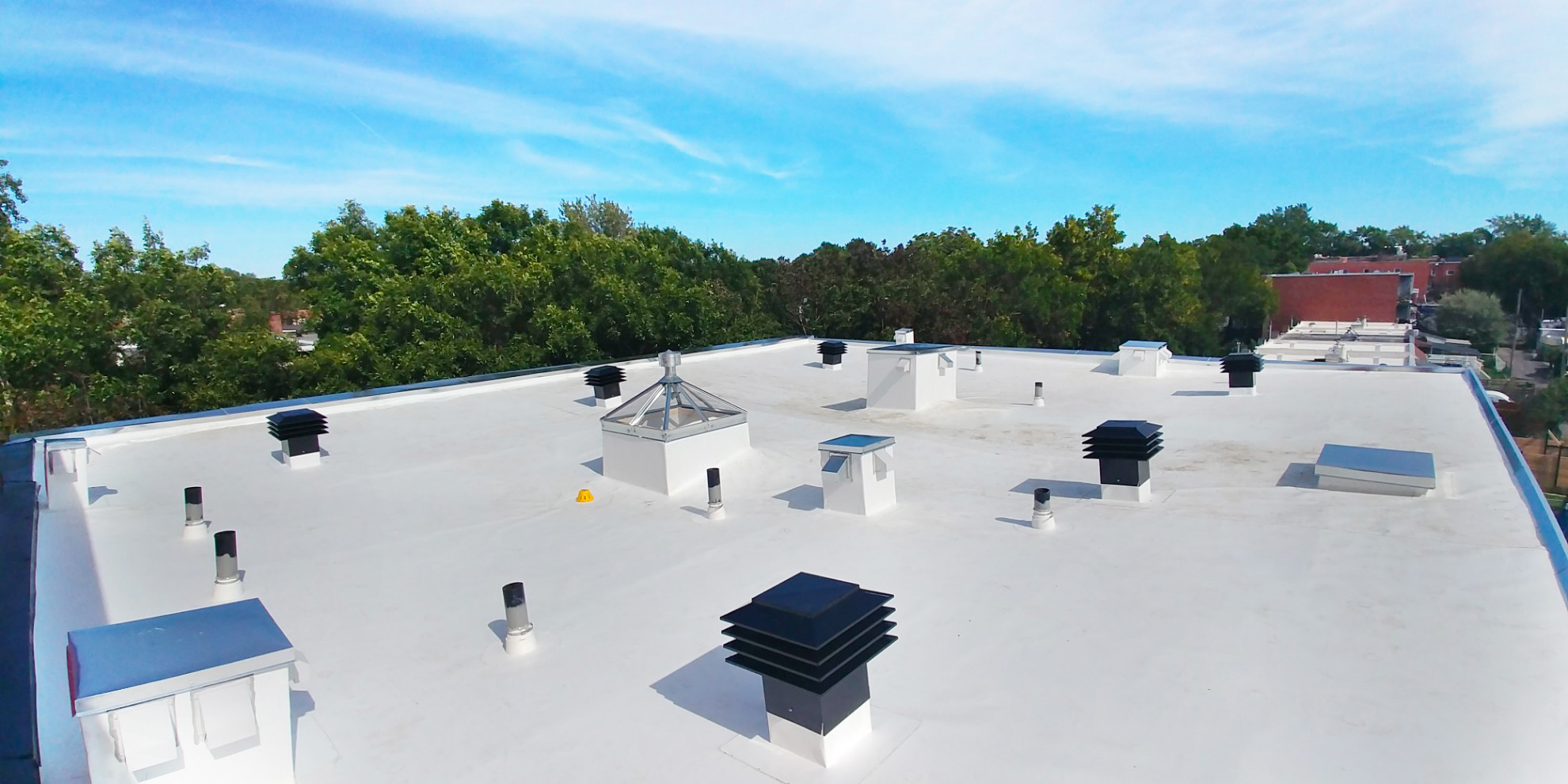
Installation Steps for a Roof Access Hatch
A roof access hatch proves its full value when it is installed correctly. For this reason, it is strongly recommended to entrust this project to professionals.
Preliminary Inspection of the Roof and Ceiling
Both the ceiling and the roof should be inspected to determine whether any additional work is required before the safe installation of the hatch.
Preparatory Work: Cutting, Reinforcement, Sealing
Based on the established criteria during the inspection, reinforcement work around the hatch location may be necessary before even proceeding with the cutting. An improvement in insulation might also be warranted.
Final Verification and Maintenance Advice
Once the hatch is installed and properly sealed, a final verification is undertaken. Even if the installation is perfectly executed, regular maintenance is essential to ensure the hatch’s durability and to prevent any risk of infiltration.
Maintenance and Inspection for Roof Hatches: Why it is Essential
Risks Associated with Poorly Maintained Roof Access
To ensure the proper functioning of a roof hatch, it must be well maintained; otherwise, it may pose potential safety hazards as well as lead to issues such as water or air infiltration, excessive condensation, or other problems.
Recommended Frequency for Inspections
We recommend a biannual inspection—once in the spring and once in the fall—to ensure the hatch’s sealing and the integrity of its materials.
Preventive Inspection Service by FCA
Our experts are best equipped to detect any potential issues before they become serious and to carry out preventive interventions that will ensure the integrity, durability, and proper functioning of your access hatch for many years to come.
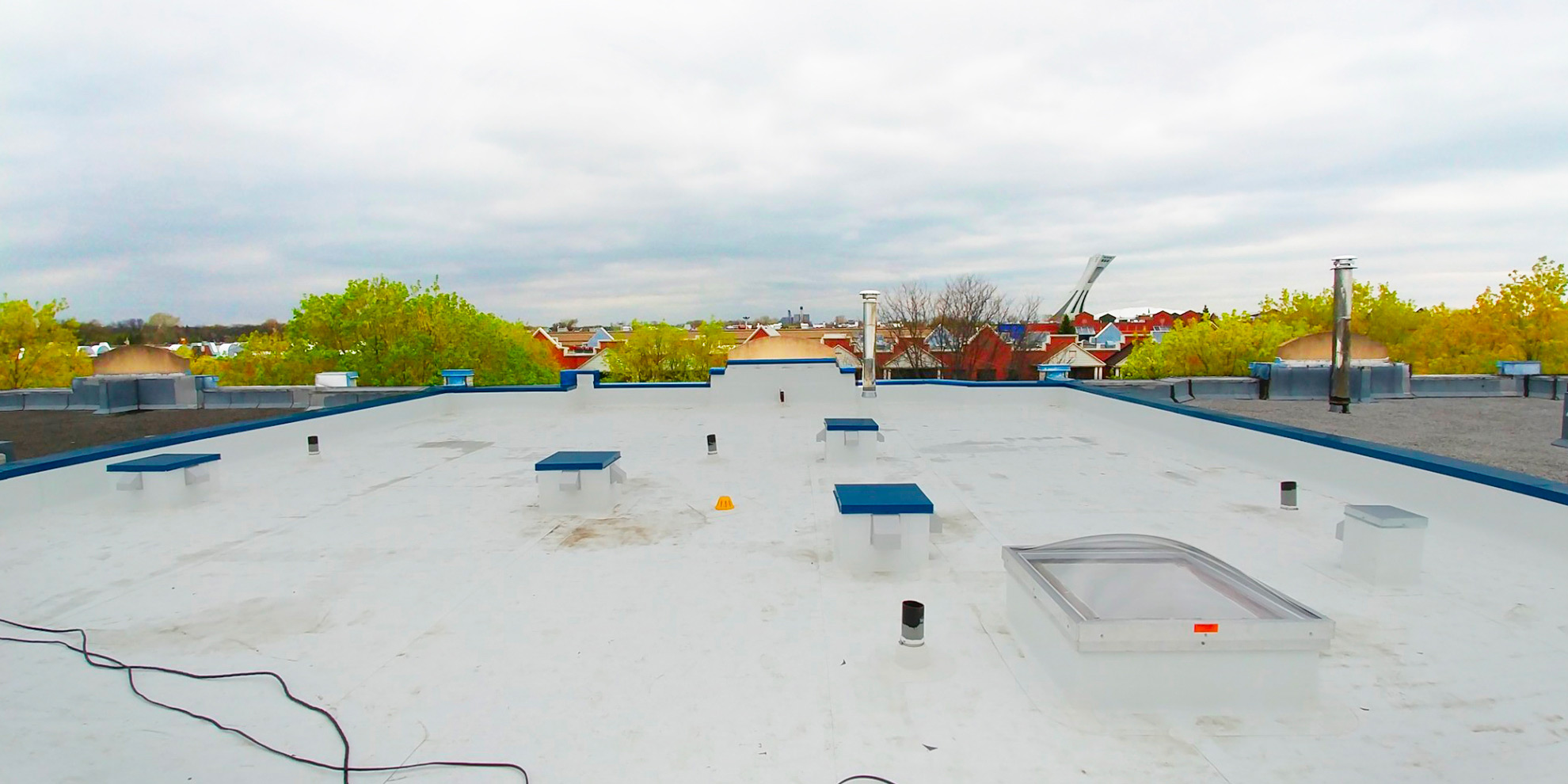
Price of a Roof Hatch in Quebec: What you Need to Know
The price of roof hatches can vary considerably depending on the type of hatch and the materials used. In addition, a residential hatch will not cost the same as a commercial access hatch. Please feel free to contact us to discuss your project and obtain a free quote, or to learn more about roofing trends.
FAQ: Everything you need to know about roof hatches
This depends on the quality of the materials and the installation, but a hatch can generally last between 15 and 25 years if well maintained.
Given the standards that must be met and the importance of a perfect installation, it is recommended to entrust this project to professionals.
A dormer is not designed to provide roof access and does not conform to any standards relating to access hatches.
No. A roof hatch is not always mandatory, but it is highly recommended to facilitate maintenance and other interventions.
You can obtain a free and quick quote directly on our website.
Need help?
Leave us your email address and we will contact you as soon as possible to assess your needs!
Put an end to your water infiltration your clogged drains your roof problems
Leave us your email address and we will contact you as soon as possible to assess your needs!
